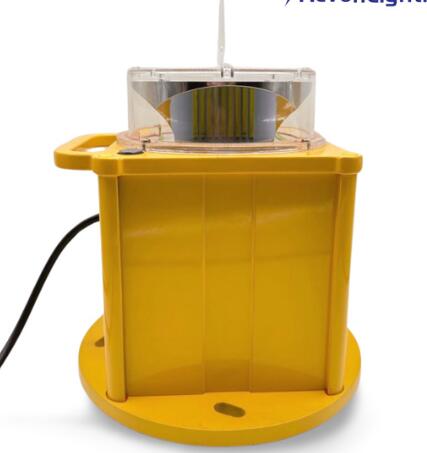Lighted Heliport Beacon: The Critical Guide for Rotary-Wing Navigation
In the dynamic world of aviation, lighted heliport beacon systems serve as indispensable visual aids for helicopter operations, particularly during nighttime or low-visibility conditions. These specialized beacons provide immediate identification of landing zones, ensuring safe approaches and departures for medical, commercial, and emergency operations. As urban air mobility expands and helicopter utilization grows, understanding the function, technology, and regulations surrounding lighted heliport beacon installations becomes increasingly vital. This article examines their purpose, operational standards, technological advancements, and future developments in rotary-wing navigation safety.
The Essential Role of Lighted Heliport Beacons
A lighted heliport beacon is a high-intensity rotating or flashing light mounted at or near a helipad to mark its location. Unlike standard airport lighting, these beacons are specifically designed for vertical-lift aircraft, accounting for helicopters' unique approach patterns and operational needs.

Key Functions:
Visual Identification: Allows pilots to quickly locate helipads from a distance.
Obstruction Warning: Helps distinguish the landing zone from surrounding structures.
| lighted heliport beacon |
All-Weather Operation: Ensures visibility in fog, rain, or darkness.
Regulatory Compliance: Meets aviation authority requirements for certified heliports.
Technical Specifications and Standards
Various aviation authorities, including the Federal Aviation Administration (FAA) and International Civil Aviation Organization (ICAO), mandate specific criteria for lighted heliport beacon systems.
| lighted heliport beacons |
1. Light Characteristics
Color: Typically white or green (sometimes yellow for hospital helipads).
Flash Pattern: Steady or pulsating to differentiate from other aviation lights.
Intensity: Adjustable based on ambient light and surrounding obstacles.
2. Placement and Coverage
Elevation: Mounted high enough to avoid obstruction by nearby structures.
Visibility Range: Must be detectable from at least 3-5 nautical miles.
Backup Power: Required for emergency operations during power outages.
3. Regulatory Compliance
FAA AC 150/5390-2C: Specifies heliport design, including beacon requirements.
ICAO Annex 14: Provides international standards for heliport lighting.
Local Aviation Authorities: May impose additional restrictions based on urban density.
Types of Lighted Heliport Beacons
Different operational environments require varying beacon configurations.
1. Standard Rotating Beacons
Traditional high-intensity rotating lights.
Common at permanent heliports and airports.
2. LED Flashing Beacons
Energy-efficient, long-lasting LED modules.
Used in portable and solar-powered systems.
3. Dual-Light Systems
Combine steady and flashing lights for enhanced visibility.
Often used in high-traffic urban heliports.
4. Portable Helipad Beacons
Deployable in remote or temporary landing zones.
Battery or solar-powered for field operations.
Technological Advancements in Heliport Beacons
Modern lighted heliport beacon systems incorporate cutting-edge innovations to improve safety and efficiency.
1. Solar-Powered Beacons
Eliminate dependency on grid electricity.
Ideal for remote medical and rescue helipads.
2. Smart Lighting Controls
Automatic brightness adjustment based on ambient conditions.
Remote monitoring for maintenance alerts.
3. Wireless Synchronization
Multiple beacons synchronized for large heliport complexes.
Reduces pilot confusion in dense urban areas.
4. Enhanced Durability
Weatherproof and corrosion-resistant materials.
Vibration-resistant for high-wind environments.
Challenges and Solutions
Despite their importance, lighted heliport beacon systems face operational hurdles.
1. Light Pollution in Urban Areas
Excessive brightness can disturb nearby residents.
Solution: Directional shielding and adaptive dimming.
2. Power Reliability
Electrical failures can disable critical beacons.
Solution: Redundant battery/solar backups.
3. Maintenance Accessibility
High-mounted beacons require specialized servicing.
Solution: Drone-assisted inspections and modular designs.
Future Trends in Heliport Lighting
As urban air mobility (UAM) expands, lighted heliport beacon technology will evolve to meet new demands.
1. Integration with eVTOL Infrastructure
Dedicated beacons for electric vertical takeoff/landing aircraft.
Dynamic lighting for autonomous drone traffic management.
2. AI-Optimized Lighting Systems
Predictive adjustments based on real-time weather and traffic.
Machine learning for failure prevention.
3. Sustainable Materials
Recyclable components and reduced energy consumption.
Solar-hydrogen hybrid power systems.
The lighted heliport beacon remains a cornerstone of rotary-wing aviation safety, guiding pilots through darkness and adverse conditions with unwavering reliability. As technology advances and airspace becomes more congested, these beacons will continue evolving—incorporating smarter, greener, and more efficient designs. Whether illuminating a hospital rooftop or a remote mountain rescue zone, their pulsating glow will remain an essential lifeline for helicopters worldwide.
